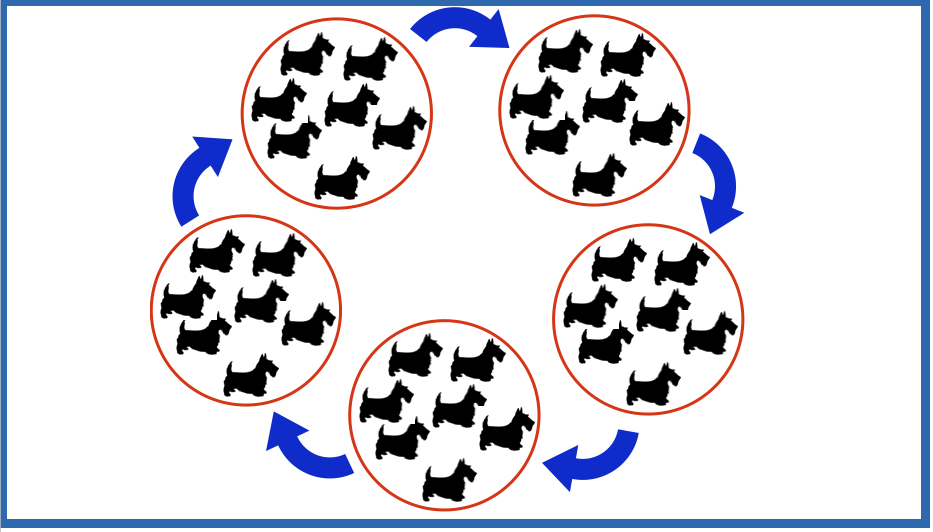Online Course
Strategies for Preservation Breeding
Genetic analysis of pedigrees
Genetic analysis of DNA
Strategies for genetic management
|
COURSE INFO
What breeds will we talk about?
All of what we will discuss applies to any breed. But we will be working in depth on data for several focus breeds to illustrate concepts and analyses. These will include the Afghan Hound, Bernese Mountain Dog, Coton de Tulear, Irish Wolfhound, Norwegian Lundehund, Stabyhoun, West Highland White Terrier, and other breeds as appropriate. How long, how much? The course is 15 weeks and $149 How hard is the course? This is a course for dog breeders; no science background is necessary. There are no prerequisites. You will benefit from having taken either Basic Population Genetics or Managing Genetics for the Future, but neither is required. You can work at your own pace and retake the course as many times as you want. How much time will it take? Generally there will be 2-5 hours of reading and homework exercises each week. Some people will do more, some will do less. How will we meet? We will meet online in a private Facebook Group where we can discuss and ask questions, each at your own convenience. What materials do we need? Interest and access to a computer. All materials will be online with access 24/7. We will be running some computer simulations for which you will need access to a laptop computer; they will not run on a mobile device. Course refunds There are no fee refunds after the first week of class. |


